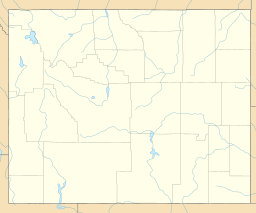Sharks Nose facts for kids
Quick facts for kids Sharks Nose |
|
|---|---|
| Highest point | |
| Elevation | 12,234 ft (3,729 m) |
| Prominence | 109 ft (33 m) |
| Geography | |
| Location | Fremont and Sublette Counties, Wyoming, U.S. |
| Parent range | Wind River Range |
| Topo map | USGS Lizard Head Peak |
Sharks Nose is a tall mountain located in the southern Wind River Range in the U.S. state of Wyoming. It stands at about 12,234 feet (3,729 meters) high! Sharks Nose is found on the west side of the Cirque of the Towers. This area is very popular for people who love to climb mountains.
The peak is just north of a mountain called Block Tower. It is also right south of another peak known as Overhanging Tower. Sharks Nose is special because it sits right on the Continental Divide. This is like an imaginary line across North America. It shows which way water will flow, either to the Atlantic Ocean or the Pacific Ocean.
Staying Safe in the Mountains
When you visit the Wind River Range, it's important to be aware of your surroundings. There are a few things to keep in mind to stay safe and have a great time.
Wildlife and Nature
- Bears: You might see bears in the Wind River Range. It's important to know how to act around them. Always keep your food safely stored. Never leave food out where bears can get to it.
- Bugs: Sometimes there are many bugs, like mosquitoes. It's a good idea to bring bug spray to protect yourself.
- Weather: The weather can change quickly in the mountains. Even in summer, nights can get very cold. Always pack warm clothes, even if it feels warm when you start.
- Snow: You might find snow even in warmer months, especially at higher elevations. Be prepared for different snow conditions.
- Wildfires: Sometimes there are wildfires in the area. Always check for fire warnings before you go.
Mountain Safety Tips
- Watch Your Step: When you are hiking or climbing, always pay close attention to where you are walking. The ground can be uneven, and there might be steep cliffs. A small slip could be dangerous.
- Falling Rocks: Rocks can sometimes fall from above. Be aware of your surroundings and listen for any sounds of falling rocks.
- Be Prepared: Always tell someone where you are going and when you expect to be back. Bring plenty of water, food, and a map. It's also a good idea to have a first-aid kit.
- Stay on Trails: Stick to marked trails whenever possible. This helps protect nature and keeps you from getting lost.
- Go with Others: It's always safer to explore the mountains with a friend or a group.
The United States Forest Service helps manage these areas. They want everyone to have a safe and fun experience in nature.



